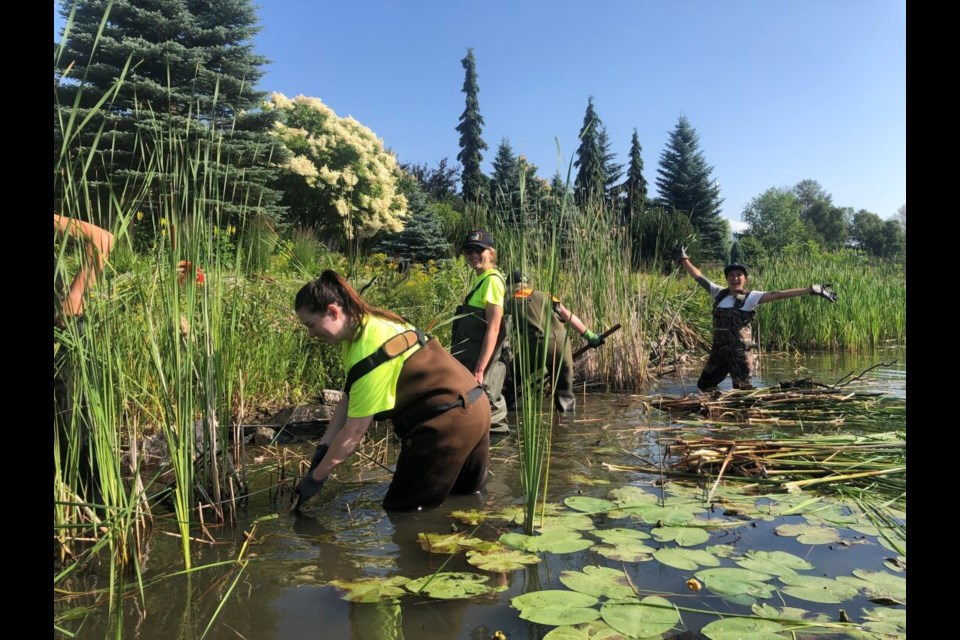Update: Due to the threat of rain, the Lakehead Region Consevation Authority postponed Thursday's scheduled planting to Friday between 2 p.m. and 5 p.m.
THUNDER BAY — A section of riverbank along the Neebing-McIntyre Floodway will soon look a lot different from how it's appeared in recent years.
After removing invasive species from a site near the Balmoral Street bridge over the summer, on Friday the Lakehead Region Conservation Authority is now replacing them with indigenous trees, shrubs and perennials.
The conservation authority has stated that it envisions a healthy riparian zone along the entire length of the floodway, with banks brimming with native species, and with the pollinators and birds they attract.
Watershed stewardship technician Jessie McFadden, who is leading the project, said creating a buffer 10 to 15 metres wide directly next to the waterway is important for wildlife habitat.
"Birds and bees use these waterways as highways. It's their natural corridors. They live, they breed, they feed in these areas. So if we can add some of the native vegetation that they depend on, it will really help them."
McFadden added that the new vegetation will also have extensive root systems which help to control erosion and take up contaminants from runoff before they enter the river system.
Plants that were removed earlier this year include large Tatarian honeysuckle shrubs and narrow-leaved cattail.
Tatarian honeysuckle is a non-native shrub from Asia that can spread rapidly due to birds and mammals dispersing the seeds, and can form a dense thicket that restricts native plant growth and inhibits biodiversity.
Narrow-leaved cattail also grows invasively in the region, and can wreak havoc on inland wetlands and lakes.
"There was a fair amount" of both these species, McFadden said. "We're actually using this particular area along the floodway as a bit of a test site to experiment with a couple different management techniques and see which works best, so that we can apply that in future projects in other areas."
Species that will be planted on Thursday include various shrubs such as red-berried elder, highbush cranberry, speckled alder, and dogwood.
Native perennials such as Joe Pye weed, swamp milkweed and asters, as well as a few different native grass species, will also be planted.
Volunteers will join LRCA staff at the project site from 2 p.m. to 5 p.m.
"We're looking forward to a fun time putting plants in the ground. There's nothing more rewarding," McFadden said.
Members of the public interested in helping may reach out via email to [email protected] for more details.
The project is funded by the Ministry of Environment, Conservation and Parks through the Great Lakes Local Action Fund, and is part of a long-range effort to restore riparian habitat along the entire length of the Neebing-McIntyre Floodway.
